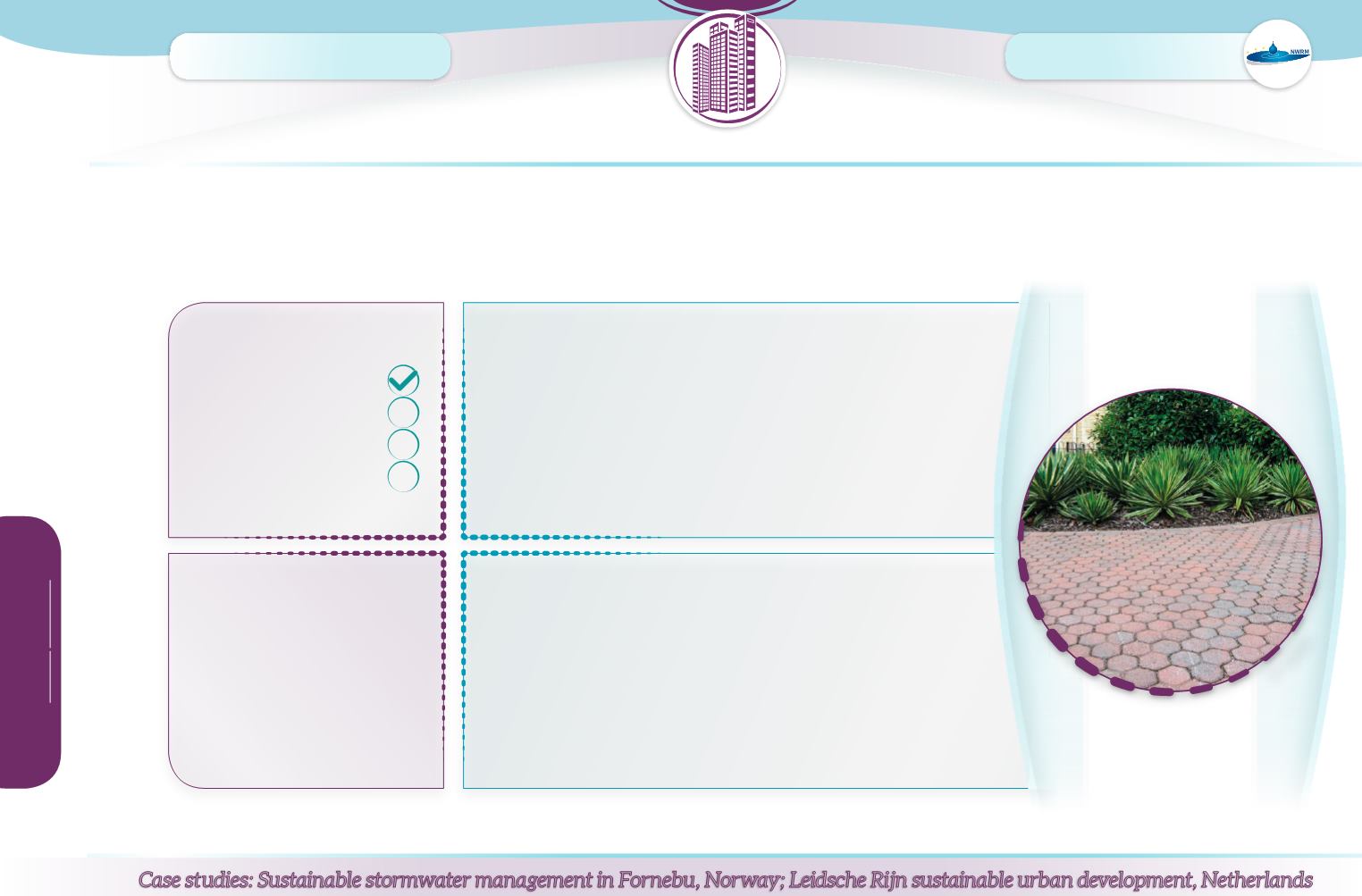
URBAN
Project funded
by theEU–DGEnvironment
L
andsurfacerelevant
forapplication
Artificial surface
Agriculture land
Forest and semi-natural areas
Wetlands
F
inancialcosts
(C
apital
,
operation
&
maintenance
)
According to Environment Agency, permeable paving
costs less on a lifecycle
basis
than traditional surfaces, with reduced maintenance costs (€1 to 5/m²/ yr)
outweighing increased capital costs. Those vary considerably (€40 to €90/m²),
depending on design approaches and construction materials. Use of
recycled
materialsmay
significantly reduce costs. No land acquisition is required, as the
pervious pavement replaces a hardstanding area.
D
esign
The design can vary considerably depending on the type of material used and
whether infiltration is to be allowed. Infiltration to underlying soils should only be
allowed where suitable conditions exist, considering slope stability, soil permeability,
groundwater levels and any ground contamination. Regular
inspection and
maintenance
(during and after heavy rainfall) is important.
S
cale
It generally takes runoff only from the
permeable area itself, although can be
designed to treat a small catchment area.
Permeable paving is designed to allow rainwater to
infiltrate through an otherwise impermeable surface
, either into underlying layers (soils and
aquifers), or to be stored below ground and released at a controlled rate to surface water. Two types can be distinguished: porous pavements, where water is
infiltrated across the entire surface, and permeable pavements, where materials such as bricks are laid to provide void space through to the sub-base. It is most
commonly used on roads and car parks.
Case studies: Sustainable stormwatermanagement inFornebu,Norway; LeidscheRijn sustainableurbandevelopment,Netherlands
©
S
u
s
d
r
a
i
n


